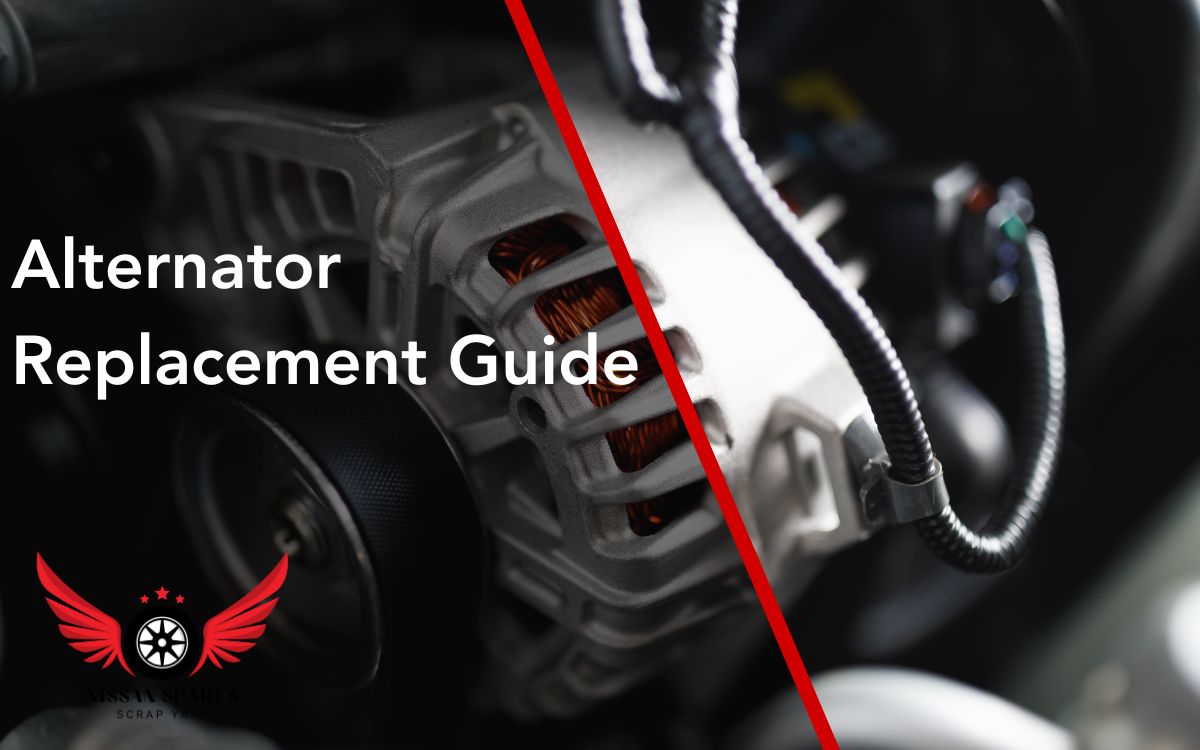Alternator Replacement Guide
The alternator is a critical component of your vehicle’s electrical system, responsible for charging the battery and powering electrical components while the engine is running. When this vital part fails, it can lead to a range of electrical issues and eventually leave you stranded. This comprehensive guide will walk you through the process of replacing your vehicle’s alternator, offering insights and tips for a successful DIY job.
Key Takeaways:
- Lifespan: The average alternator lasts 7-10 years or about 160,000-240,000 km.
- Replacement Cost: Typical costs range from R7,500 to R15,000, including parts and labor.
- DIY Savings: Replacing the alternator yourself can save up to 50% on labor costs.
- Failure Causes: 90% of alternator failures are due to worn out brushes or bearings.
- Efficiency: Modern alternators operate at 70-80% efficiency.
Understanding Alternators: Function and Failure Signs
Before diving into the replacement process, it’s essential to understand how alternators work:
- Function: Converts mechanical energy from the engine into electrical energy
- Components: Includes rotor, stator, rectifier, and voltage regulator
- Operation: Driven by the serpentine belt, generates AC power converted to DC
Signs of a failing alternator include:
- Dimming or flickering lights
- Battery warning light on the dashboard
- Electrical system issues (power windows, radio malfunction)
- Strange noises (growling or whining)
- Frequent battery drain or jump-starts needed
Regular maintenance, including alternator checks, is as important as other vehicle maintenance tasks like spark plug replacement.
Preparing for Alternator Replacement: Tools and Safety
Before beginning the replacement process, gather these essential tools and materials:
- New alternator (matching your vehicle’s specifications)
- Socket set and wrenches
- Belt tensioner tool
- Multimeter
- Safety glasses and gloves
- Battery terminal puller
Safety is paramount when working on your vehicle’s electrical system. Always disconnect the battery before starting work and be cautious of hot engine components.
Step-by-Step Alternator Replacement Guide
Follow these steps for a successful alternator replacement:
1. Prepare the Vehicle
- Park on a level surface and allow the engine to cool
- Disconnect the negative battery terminal
- Locate the alternator (usually on the front of the engine)
2. Remove the Old Alternator
- Release tension on the serpentine belt and remove it from the alternator pulley
- Disconnect all electrical connections to the alternator
- Remove mounting bolts and carefully extract the alternator
3. Install the New Alternator
- Compare the new alternator to the old one to ensure proper fitment
- Position the new alternator and secure with mounting bolts
- Reconnect all electrical connections
- Reinstall the serpentine belt, ensuring proper tension and alignment
4. Test and Finalize
- Reconnect the battery
- Start the engine and check for proper operation
- Use a multimeter to verify correct voltage output (typically 13.5-14.5 volts)
For more detailed information on maintaining your vehicle’s electrical system, check our guide on battery replacement.
Alternator Replacement Cost Comparison Table
| Aspect | DIY Replacement | Professional Service |
|---|---|---|
| Average Cost | R3,750 – R7,500 (parts only) | R7,500 – R15,000 (parts and labor) |
| Time Investment | 2-4 hours | 1-2 hours |
| Skill Level Required | Intermediate | Professional |
| Tools Needed | Specialized tools, multimeter | Provided by service center |
Maintenance Tips for Prolonging Alternator Life
To maximize the lifespan of your alternator:
- Regular Belt Inspections: Check for wear and proper tension
- Keep Electrical System in Check: Avoid overloading with aftermarket accessories
- Address Battery Issues Promptly: A failing battery can strain the alternator
- Clean Connections: Keep battery terminals and alternator connections clean and tight
Regular maintenance, including tasks like air filter changes, contributes to overall engine health and can reduce strain on the alternator.
Troubleshooting Common Alternator Issues
If you encounter problems after replacement:
- No Charge: Check all connections and belt tension
- Overcharging: Possible voltage regulator failure
- Noise: May indicate bearing issues or misalignment
For belt-related problems, our serpentine belt change DIY guide can provide useful insights.
Conclusion: Ensuring Reliable Electrical Power
Replacing your vehicle’s alternator is a significant maintenance task that offers several benefits:
- Reliable electrical system performance
- Prevention of unexpected breakdowns
- Protection of other electrical components
- Potential cost savings compared to professional replacement
While the replacement process can be complex, following this guide and using quality parts can help ensure a successful outcome. If you’re unsure about any step, consider seeking professional assistance to avoid costly mistakes.
Remember, proper maintenance of your vehicle’s electrical system, including regular electrical system diagnostics, can prevent undue stress on your alternator and extend its life.
FAQ
How long does an alternator typically last?
On average, alternators last 7-10 years or about 160,000-240,000 km. However, this can vary based on driving conditions and vehicle make.
Can I drive with a failing alternator?
It’s not recommended to drive with a failing alternator. Once the battery’s charge is depleted, your vehicle will stop running and could leave you stranded.
How can I tell if it’s the alternator or the battery causing electrical issues?
If you jump-start the car and it dies shortly after removing the jumper cables, it’s likely an alternator issue. If the car starts fine after a jump but won’t start later, it’s more likely a battery problem.
Is it worth rebuilding an alternator instead of replacing it?
In some cases, rebuilding can be cost-effective, especially for older or rare vehicles. However, for most modern cars, replacement with a new or remanufactured unit is often more practical and reliable.
Can a bad alternator damage other parts of my vehicle?
Yes, a faulty alternator can potentially damage the battery, electrical system components, and even the engine control unit if left unaddressed for too long.


